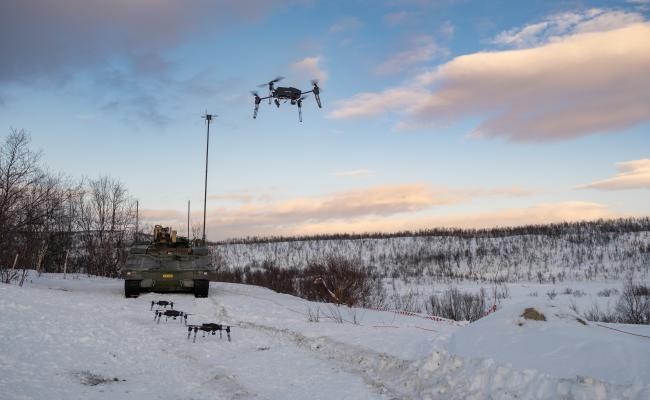Debate: Rethinking Hybrid War and the West’s Security Interests

The software glitch of CrowdStrike summer of 2024, lifted the curtain on the vulnerabilities of cyber systems worldwide. (Illustration photo by AdobeStock)
The opinions expressed here belongs to the author and do not represent the views of High North News.
When a failure at US cybersecurity company, CrowdStrike, brought outages to global businesses, hospitals, airlines, and communications networks, the consequences went far beyond inconvenient flight delays.
The software glitch lifted the curtain on the vulnerabilities of cyber systems worldwide.
The rising frequency of accidental cyber-events, along with the growing instances of intentional, destructive hacks, such as those regularly deployed by Russia, China and Iran, illuminates how ill prepared companies and governments often are to prevent, detect, and respond to attacks.
In July, the Western NATO allies convened in Washington, D.C. during its 75th year anniversary. The thirty-two-member military-defense alliance discussed the form of warfare deployed by its current adversaries, one that bears scant resemblance to the threats following WW2.
Hybrid war, a centuries-old political-military strategy, has found a contemporary foothold. Like a volcano, it requires the right combination of technology, culture, and asymmetric strategies, to erupt.
Hybrid attacks often target societal principals, such as democratic processes
The weapons of hybrid war, the internet, social media, artificial intelligence, culture and law, are wielded to wage lawfare, create disinformation and misinformation systems, conduct small-scale vandalisms to critical infrastructure, including undersea and oil and gas pipelines, and sabotage communications systems.
Hybrid attacks often target societal principals, such as democratic processes, by creating alternative realities to sow social discord.
Hybrid wars have no forward presence or front lines, operating in a “gray zone.” With the advent of smartphones, social media, and interconnected digital networks, physical national borders have far less relevance.
The concept of “peace,” in the constantly moving cyber-domain, does not exist. To successfully defend against hybrid attacks, the West is broadening its capabilities, collaborations, and fundamental meaning of “war.”
As a corollary, given that the cyber domains know no borders, the meaning of sovereignty itself is in question.
Also read (The text continues)
Following its unprovoked kinetic invasion of Ukraine, the Kremlin has unleashed an unprecedented global hybrid assault.
In June 2023, the Kremlin breached several European banking institutions, including the European Investment Bank, in retaliation for Europe’s support for Ukraine.
In November that year, Denmark suffered its largest cyberattack on record when twenty-two power companies were shut down.
In February 2024, Russian hackers injected malware into servers at the embassies of Poland, Georgia and Ukraine to collect information on European and Iranian military activities.
In historically ‘low-tension’ regions like the Arctic, hybrid threats and “grey zone” activities, deployed by Russia – particularly on Norway’s Svalbard Archipelago – and the maritime Arctic appear to have become a centerpiece of Russia High North, if not global, strategy.
Also read (the text continues)
The Kremlin uses its 1920 Treaty-based presence as a basis for lawfare, challenging Norway’s environmental regulations, its legitimacy to Norway’s continental shelf and seeks to impede Western access through the GIUK-N Gap (Greenland, Iceland, UK, Norway.)
The Kremlin’s recently forged alliance with the newly expanded BRICS nations and its Svalbard-based science program, appears a forward base for its hybrid initiatives between Murmansk and the Atlantic.
At the 2024 NATO Summit, the Heads of State agreed to establish a Belgium-based NATO Integrated Cyber Defense Centre. The intention is to, “strengthen and secure allied networks, improve situational awareness, heighten cooperation and interoperability,” and implement cyberspace as an operational domain.
The Pentagon recently released its Strategy to Achieve IT Integration and Interoperability to “turn strategic vision into operational reality.”
In this unfolding security landscape, where the lines between physical and virtual realms blur, and traditional military strength cannot guarantee security, a combination of government, military, commercial industry, science and local communities together are taking steps to improve capabilities, from cyber-defense to legal vigilance regarding the use of lawfare, where legal challenges are deployed with ill intent.
Without tight integration, the cyber-threat landscape will always have gaps
Following the NATO meeting, a Finnish Ambassador privately noted that the allies must build a tight integration of capabilities in the cyber-domain, a new fundamental level of transparency, collaboration and cooperation that overrides corporate or “national security” or even sovereignty barriers.
“True interoperability,” he said, “requires full trust so that each of the allies builds the components parts and policies according to the greatest capabilities, to be integrated into a cyber totality.” “Without tight integration,” he said, “the cyber-threat landscape will always have gaps.”
For NATO, a core question being discussed by some members, is whether, or what level of cyber-attack against a NATO nation should trigger the mutual defense guarantee of Article 5? And, if so, what is an appropriate response?
The CrowdStrike error clearly demonstrates that, given the growing context of hybrid war, the West must both strengthen and truly integrate its cyber capabilities while engaging civil societies to promote open discourse, combat false narratives and low-level but persistent pressures in a rapidly changing world where Democracy itself is under attack.
A new level of trust within the NATO nations is, indeed, vital to rethink sovereignty so that neither seemingly benign political gaps nor gaps in the cyber domain can be widened to serve an adversaries’ strategic interest.




